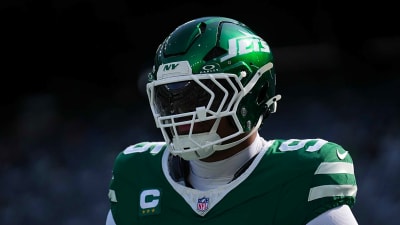
NASCAR can no longer ignore Next Gen car's glaring issues
At the conclusion of the 2022 NASCAR season, NASCAR’s seventh- generation car — dubbed the “Next Gen” — was deemed a resounding success.
The first season of the Next Gen car included lots of parity and exciting racing. Despite a few duds, the racing product flourished overall, especially on intermediate tracks where the Gen-6 car had failed to provide compelling shows in the years leading up to the Next Gen’s debut. In 2022, NASCAR saw upticks in attendance, TV ratings and overall fan interest as the organization's new car provided one of the more competitive seasons in the body's history.
Now, however, that luster has worn off. Complaints regarding the racing product are a major headline following Sunday’s Food City 500 at Bristol in which Kyle Larson dominated and the rest of the field struggled to pass. These complaints came to a head following a three-week stretch of races at Martinsville, Darlington and Bristol. Once-great racing at those tracks has become stale and stagnant.
Like every sport, NASCAR is prone to its fair share of mediocre or bad events in every era, no matter the car. Some NASCAR races are dominated by one driver and feature few storylines. Sometimes, a team just hits on the setup. It’s just as much a part of the game as the occasional gritty defensive struggle is in the NFL.
But NASCAR’s issue lies not with the dominance of Denny Hamlin at Martinsville, William Byron at Darlington or Larson at Bristol. Nor is NASCAR’s main issue its tire supplier in Goodyear, which has tried mostly in vain to bail out NASCAR's poor product with softer tires in recent years, especially at short tracks.
NASCAR must acknowledge that the Next Gen car has several fundamental issues that, regardless of the other circumstances present on race day, hold it back from being a consistently good racing vehicle, regardless of track.
One doesn't have to venture deep into the mechanical weeds to find these issues. For starters, the new, wider wheel and tire introduced with the Next Gen car in 2022 provide too much grip. Plus, the lack of horsepower — the Next Gen car is capped at 670 — doesn’t generate enough opportunities for wheelspin or other mistakes.
Perhaps the most glaring issue with the Next Gen car is the spec premise with which it was designed. A car built mostly with identical, single-source parts that teams are unable to modify sounds fantastic in theory from a financial and competitive standpoint. Cars that are similar to each other won’t only be cheaper to build, but the similarity between each vehicle will put races solely in the drivers’ hands.
However, the glaring issue comes when the cars are so similar that even the best drivers with the fastest cars aren’t able to make moves. Next Gen races have mostly become pure track position battles, where if a driver who has been up front for a majority of the race is shuffled back in the pack late in a race, he's unable to make ground. In the same vein, cars that have struggled to crack the top 20 are able to run up front if given the track position, thanks in large part to the overwhelming advantage of clean air.
The Talladega-sized elephant in the room can no longer ignored. It's time for sweeping changes to NASCAR's Next Gen car or time for a Gen-8 car to be designed.
More must-reads:
- NASCAR power rankings: Kyle Larson dominates the weekend
- Jesse Love finishes 31st in rough-and-tumble NASCAR Cup Series debut
- The 'Daytona 500 winners' quiz
Breaking News
Trending News
Customize Your Newsletter
 +
+
Get the latest news and rumors, customized to your favorite sports and teams. Emailed daily. Always free!








